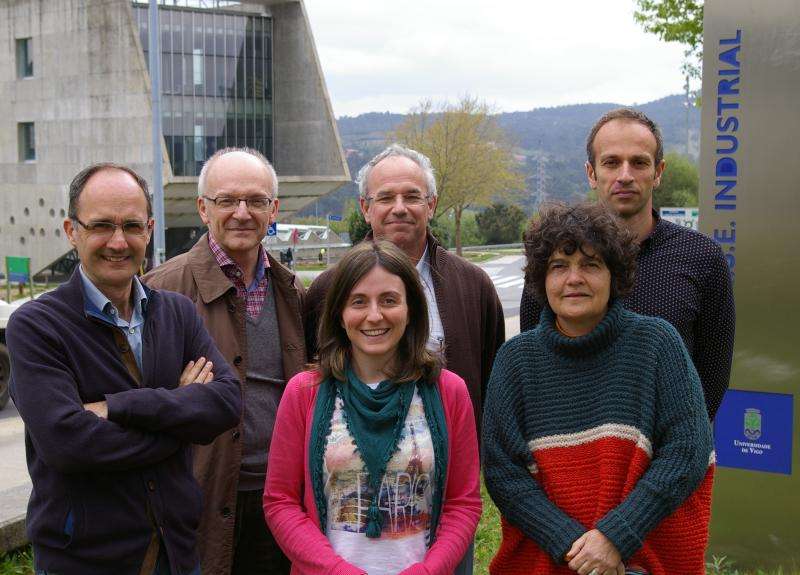Spanish scientists patent a faster and more reliable technique for diagnosing oral cancer

Malignant tumours of the oral cavity are the sixth leading cause of cancer-related deaths worldwide. Fast and accurate diagnosis is key to maximising the probability of successful treatment and the hope and quality of life of patients.
Investigators from the Biomedical Research Institute (IBI), in Galicia (Spain), who form part of the BIOCAPS project, have patented a faster, more reliable and less invasive technique for detecting carcinomas in the oral mucosa. This patent has been licensed to the company Irida Ibérica, which is currently developing a portable prototype and will fund further research by the IBI scientists to establish the exact malignancy parameters by way of in vivo trials, in other words using tissues analysed in patients.
Scientific/clinical collaboration, which is one of the main objectives of BIOCAPS to ensure research results oriented towards resolving problems in medical practice, has formed a key part of this breakthrough. Thus, the New Materials Group at IBI and the Otorhinolaryngology Department at the Hospital Povisa (Vigo) worked together to develop this new technique, which could possibly be adapted for application in the diagnosis of other common cancers, such as cervical and skin cancer, in the future.
Numerous advantages
"The earliest symptom of cancer of the oral cavity is the appearance of whitish or reddish lesions, which do not disappear or which may grow larger with time, on the inner surface of the oropharyngeal cavity", explains Dr. Roberto Valdés from the Hospital Povisa. These lesions subsequently become painful, either spontaneously or during chewing or swallowing, followed by the onset of oral bleeding.
In the event of the onset of such signs, the method currently used to diagnose carcinoma of the epithelial mucosal tissue in the oropharyngeal cavity (the moist tissues that cover the mouth and upper part of the throat) is observation and biopsy of those tissues with an abnormal appearance. This is therefore an invasive technique whose accuracy depends on adequate sampling of the lesion and correct interpretation of the results of the pathological analysis.
The alternative designed by the BIOCAPS researchers provides important advantages by "comprising a non-invasive technique that allows tissue to be analysed in the patient, without the need for either incisions or tissue removal", as noted by Pío González, the coordinator of the New Materials Group. Moreover, it can be performed using an easy-to-handle portable device, thus allowing the technique to be used by physicians and result to be obtained immediately in the consulting room or operating theatre without the need for laboratory analyses. From a clinical viewpoint, Valdés notes that "this is a non-traumatic test as there is no need to perform biopsies, thus making it possible to perform multiple examinations in suspected patients and reach an early diagnosis of this tumour-type disease".
Indeed, the new method is expected to substantially reduce the costs and time required for diagnosis, a key factor as regards applying the treatment as soon as possible, and will also replace the subjective interpretation of results by providing an exact measure of the degree of malignancy or normality of the tissue.
The key to this new technique is the use of an optical technique known as Raman spectroscopy, which involves irradiating the tissue with laser light to provide accurate information regarding the surface irradiated without having any harmful effects on it.
"Although it had previously been shown that Raman spectroscopy can differentiate between different functional groups characteristic of changes in living tissue, specific studies with this type of cancer had not been conducted", explains Miriam López, a researcher at IBI. "Malignancy indices such as those developed by us were also unavailable, therefore this study represents and clear and specific breakthrough in the detection of this disease with high reliability", she adds.
Prototype in late 2015
Irida Ibérica expects to have the first prototype available by the end of this year and will then fund the research that will be performed at the IBI to refine the malignancy parameters previously obtained using measurements performed in the laboratory and which this study will allow to be compared with patient samples provided by two Galician hospitals.
Once the final malignancy criteria established in the in vivo trials have been incorporated, the technique will be made available to the medical community. "It will be vital to attend conferences to present this technique and demonstrate to specialists that it is more objective and reliable as it will even allow diagnosis before the tumour becomes visible by identifying cancerous cells before they can be observed visually", explains Nikos Ekizoglou, head of projects at the company.
The research that resulted in this new diagnostic technique was conducted within the framework of the European BIOCAPS project and was partially financed with FEDER funds via the Xunta de Galicia.



















